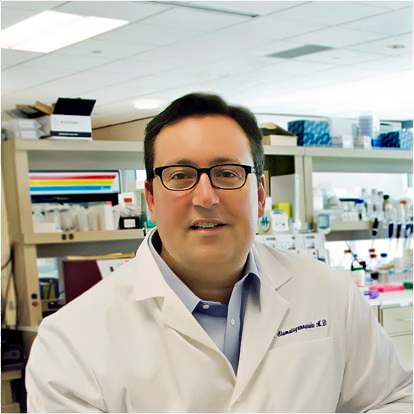The discovery of dual-purpose condons, called ‘duons’ opens the door to creation of more precise diagnostic and medical laboratory tests, as well as better treatment choices
New insights into the human genome have led to the discovery of a second “code” or “language” within human DNA. Pathologists performing genetic testing will be particularly interested in the implications of this discovery, which the researchers have dubbed “duons.”
It was a research team at the University of Washington (UW) that discovered evidence of a second type of DNA code overlying the protein code that controls transcription factors (TFs). TFs regulate flow of genetic information from DNA to messenger RNA, which manages the synthesis of proteins described by the DNA.
Potential Uses of This Information in Clinical Laboratory Testing
Some experts predict this finding, as it is validated by other researchers, will change how scientists read the instructions stored in DNA and interpret the role of mutations in health and disease. For pathologists and clinical laboratory managers, the detection of duons in DNA represents just one more dimension of knowledge being teased out of the human genome.
In recent months, Dark Daily has reported on several different discoveries that are changing the way scientists understand the form and function of human DNA. One such insight was the discovery that a surprisingly large number of humans have two genomes (mosaicism and chimerism). (See Dark Daily, “New Finding Has Major Implications for Genetic Testing as Researchers Learn that Greater Numbers of Humans Have Multiple Personal Genomes,” December 30, 2013.)
Another equally significant insight involved research into DNA dark matter. Scientists decided to determine the location of human chromosomol proteins that initiate transcription of noncoding RNA. They identified 160,000 “transcription initiation machines” across that portion of human DNA that does not contain genes. (See Dark Daily, “New Research Findings Determine that ‘Dark Matter’ DNA Does Useful Work and Opens Door to Develop More Sophisticated Clinical Pathology Laboratory Tests,” February 26, 2014.)
Now comes news that human DNA has a second “language.” Results of this study were published in the December 13, 2013 issue of Science. The study was conducted as part of the Encyclopedia of DNA Elements Project, or ENCORE, a collaboration of international research groups funded by the National Human Genome Research Institute. Encore’s goal is to discover where and how the directions for biological functions are stored in the human genome.
UW Researchers Discover Dual-Use Codons, or ‘Duons’
The UW research team is led by John Stamatoyannopoulos, M.D., an Associate Professor of Genome Sciences and Medicine at the UW School of Medicine. The researchers discovered that genomes use genetic code to write two separate languages, one describing how proteins are made and the other instructing the cell on how genes are controlled, noted a UW press release. The second language has remained hidden because it is written on top of the other one.
Genetic code uses an alphabet with 64 letters, which are called codons. The UW research team, however, discovered that 15% of human codons−the nucleotide triplets represented by the “N” in DNA−are dual-use codons that simultaneously specify both amino acids and TF recognition sites, wrote the researchers in the Science article. These so-called “duons” appear to have evolved in concert with each other, they suggested, noting that the gene control instructions appear to stabilize certain beneficial features of proteins and how they were made.
Discovery of Duons Upends Longstanding Ideas About Genetic Code
Previously, scientists had considered genetic code a book to be read—a recipe for making proteins. But an article published by Forbes, suggested that, in light of the UW discovery, it appears that DNA acts more like a software app. TFs bind to specific DNA sequences next to the genes they control.
Similar to JavaScript app code, these TFs employ certain logic to turn the transcription of genetic material on and off and regulate its speed, the Forbes author explained. He noted that TFs bind to all areas producing a certain type of protein in a certain cell line and keeps them all coordinated in real time.
“For over 40 years, we have assumed that DNA changes affecting the genetic code solely impact how proteins are made,” stated Stamatoyannopoulos. “Now we know that this basic assumption about reading the human genome missed half of the picture. These new findings highlight that DNA is an incredibly powerful information storage device, which nature has fully exploited in unexpected ways,” he pointed out.

Genome scientist John Stamatoyannopoulos, M.D., (pictured) is Associate Professor of Genome Sciences and Medicine at the University of Washington School of Medicine. He led a team of researchers that discovered a second genetic code hidden in human DNA. (Photo copyright University of Washington.)
“The fact that the genetic code can simultaneously write two kinds of information means that DNA changes that appear to alter protein sequences may actually cause disease by disrupting gene control programs, or even both mechanisms simultaneously,” observed Stamatoyannopoulos.
Duons Open the Door to More Precise Diagnostics and Therapy Choices
Previous studies indicate that 85% of disease-causing mutations reside in the human exome, the protein-coding region that comprises just 1% of the whole human genome. Therefore, the discovery of duons has major implications for how physicians interpret a patient’s genome and diagnose and treat diseases. For pathologists who are creating new genetic diagnostic tests and interpreting results, this discovery opens another spectrum of knowledge that may eventually contribute to more precise diagnoses and a better choice of therapies.
—by Patricia Kirk
Related Information:
Scientists discover double meaning in genetic code
Human DNA Is Not A Document, It’s An App
Scientists Discover Second Genetic Code Hidden in DNA
Don’t Be Duped By ‘Duon’ DNA Hype
Exonic Transcription Factor Binding Directos Codon Choice and Affects Protein Evolution



